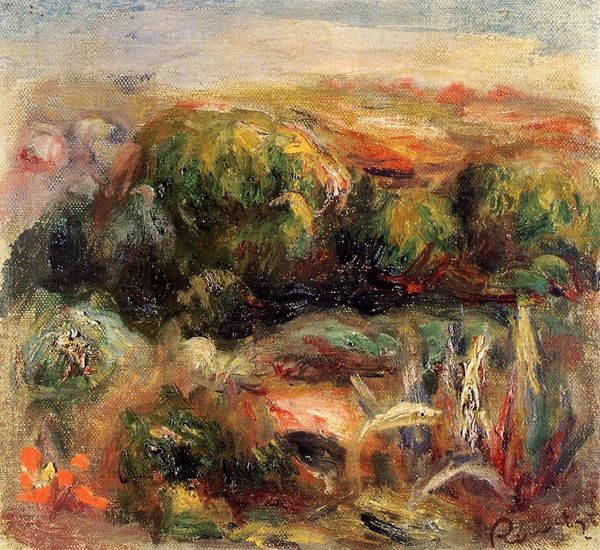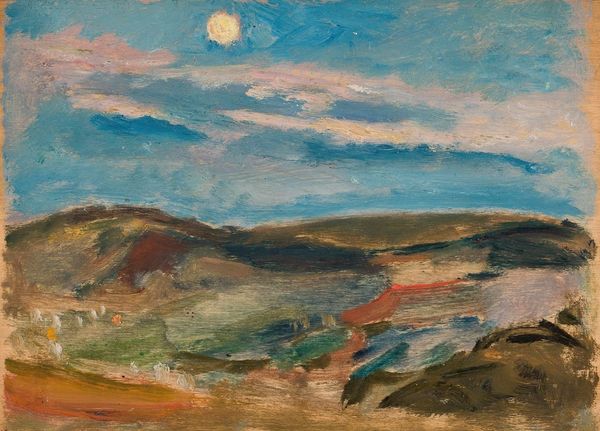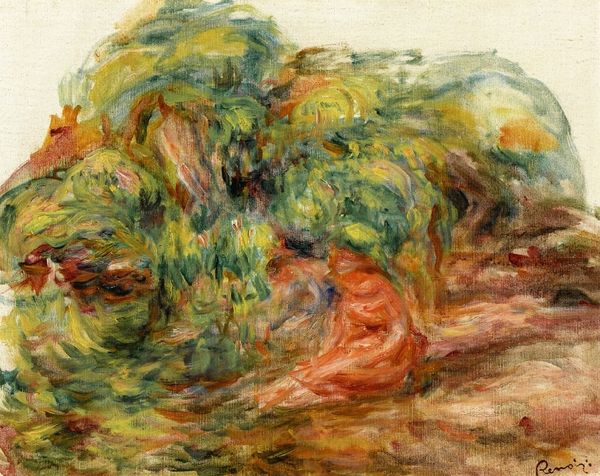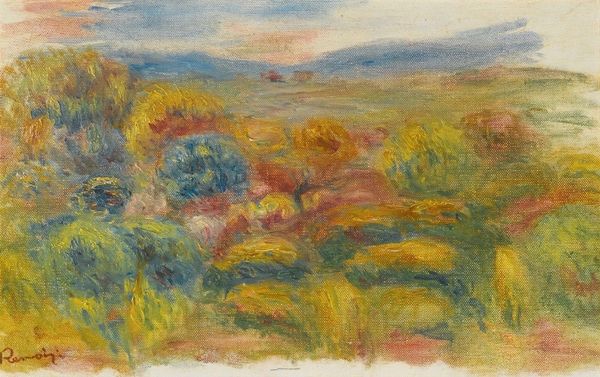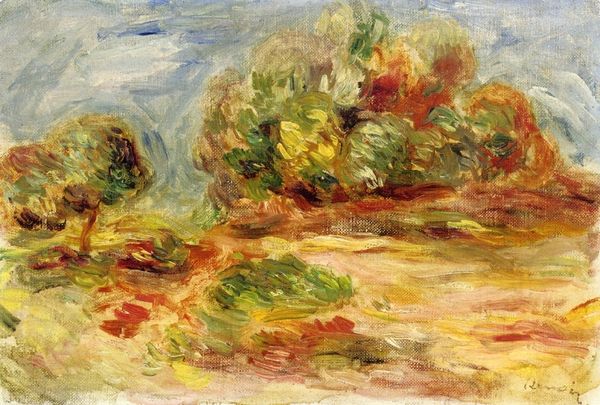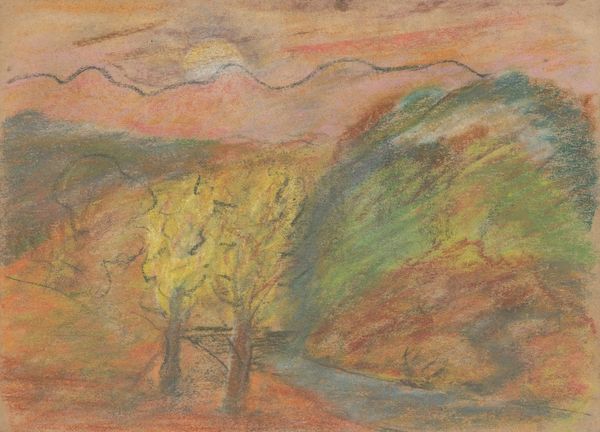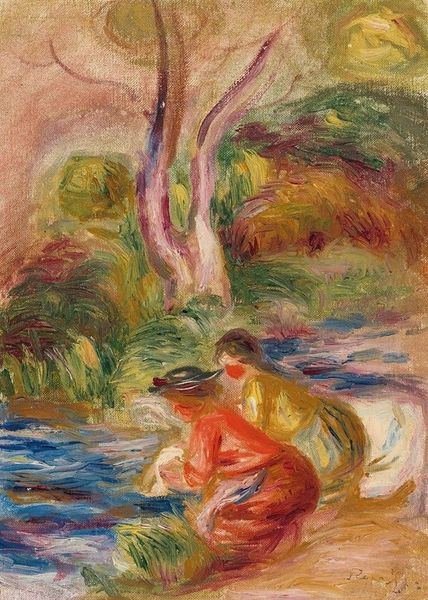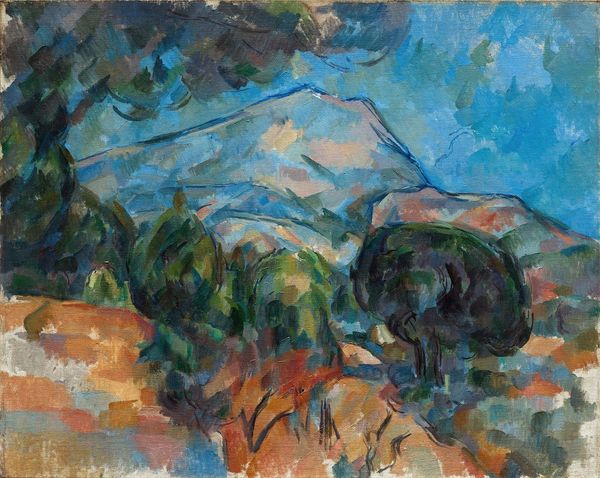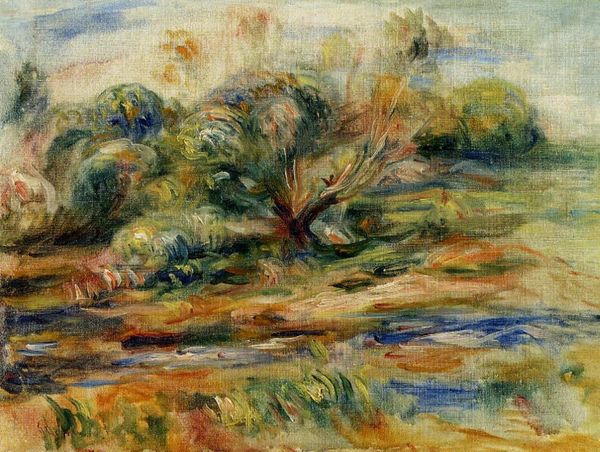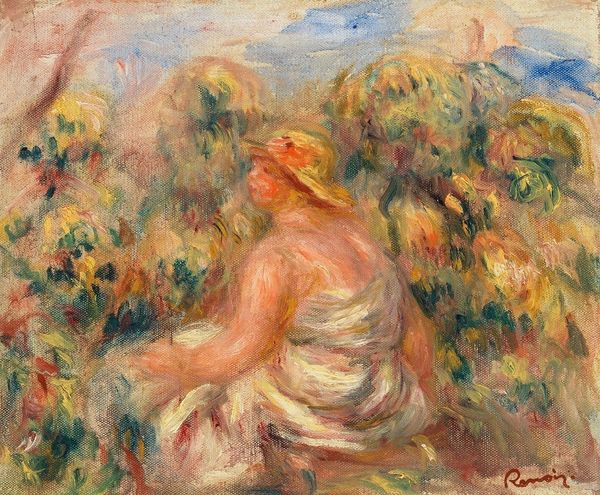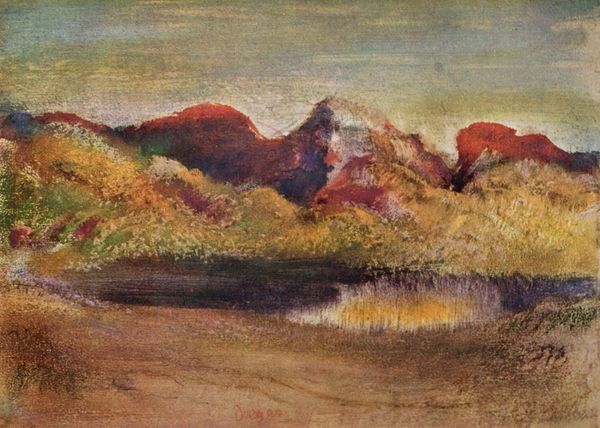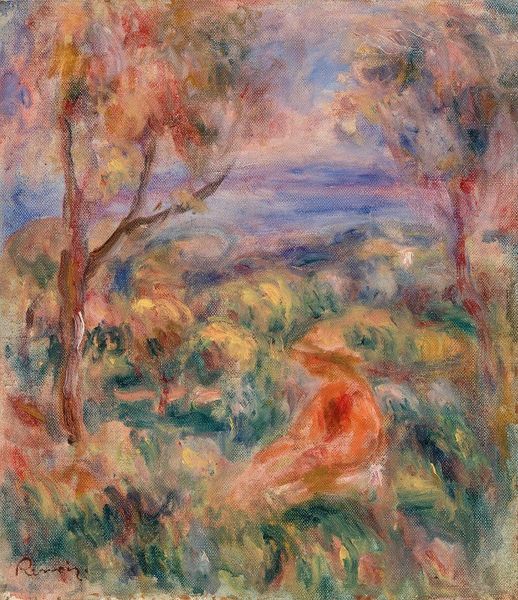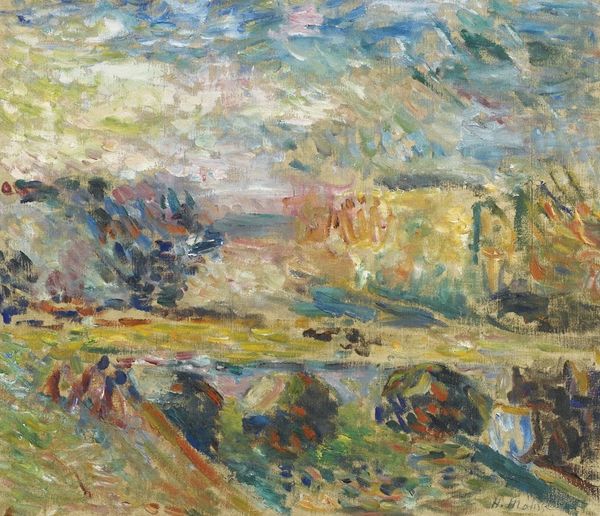
Copyright: Public Domain: Artvee
Curator: Here we have Pierre-Auguste Renoir’s, “Laveuse Dans Un Paysage,” likely created between 1900 and 1910. It is oil on canvas. Editor: Immediately striking! The landscape dissolves into almost abstract swaths of color. The bright blue of the water is particularly arresting. Curator: It exemplifies the Impressionist interest in plein-air painting, doesn’t it? It really shows a focus on capturing fleeting moments, and light, in the outdoors. This one looks as if the materials of its creation - paint and canvas - had a certain kind of materiality with social and political context related to gender and art in society at the turn of the century. Editor: Absolutely. You see Renoir engaging with the traditional subject of women and labor. But there is an argument that the way he dissolves the figure into the landscape, he almost erases the woman's identity and hard labor, instead framing her as one component in this dreamy scene. How does that sit for you, reflecting on both Impressionism, as well as gender? Curator: That's insightful. The texture of the brushstrokes is so prominent! And consider the process – how the physical act of applying paint becomes as important as the scene depicted. I suppose that also goes some way to abstracting it and making a statement through its materiality. It reminds us how the commodification of art also involved selling artist’s persona through each painted stroke. Editor: Yes! And the historical moment is key. Women working were common; women laboring were not shown or documented with great artistic care, more as an afterthought or detail. There is that problematic interplay here, in my opinion. The mountains, in the back also feel somehow more “solid” in the rendering than she, an active worker. What I take away from this picture then becomes not solely about beauty, light, brushwork, etc, but it becomes an intersectional query: is the figure a mere decoration of this pretty vista? Curator: Hmm. That is some way to frame it - I see what you're getting at and, yes, there's a definite reading around how Renoir's painting handles women, labor and romanticising social realities. Editor: It definitely encourages us to question traditional notions of beauty, artistic intention, labor and representation. Food for thought!
Comments
No comments
Be the first to comment and join the conversation on the ultimate creative platform.

